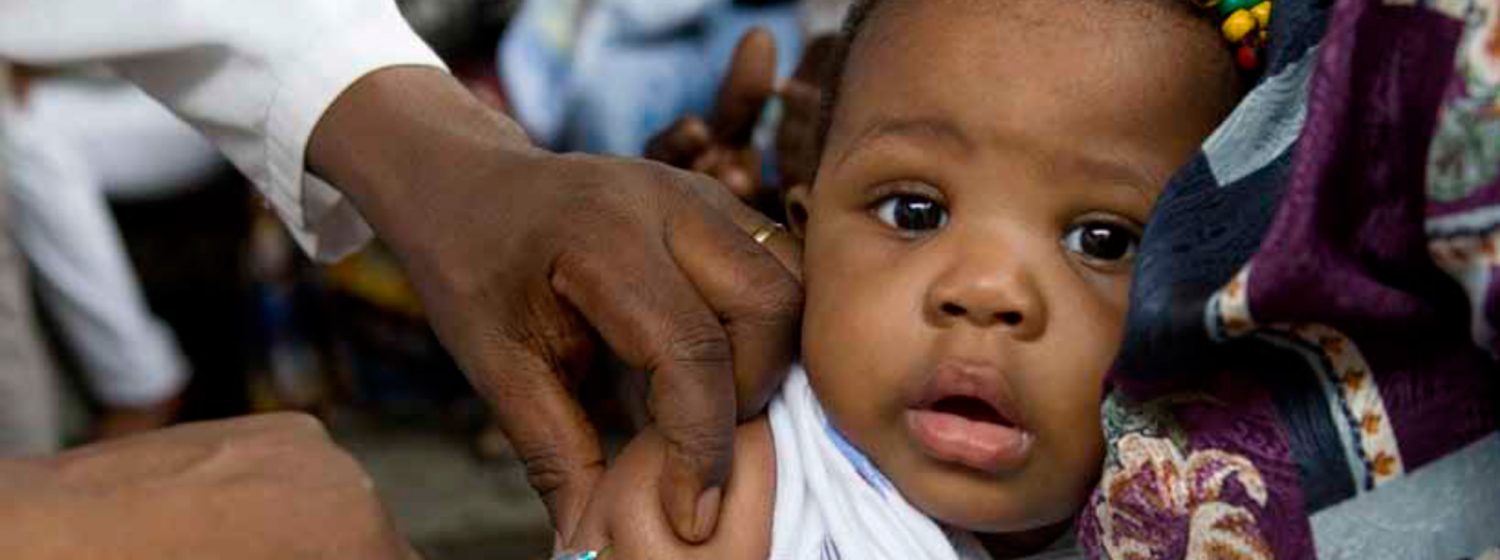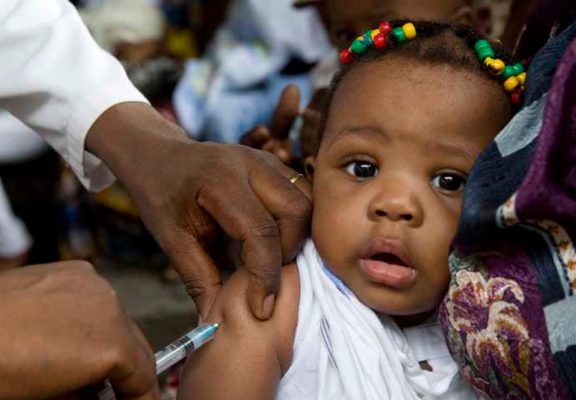


The Gambia
The Gambia is a small West African country, bounded by Senegal, with a narrow Atlantic coastline. It's known for its diverse ecosystems around the central Gambia River. Its population is 2 million people and its GDP per capita is USD 488.
The Gambia is a low-income country in West Africa. In 2015, the country was one of the African countries rewarded by the African Union for its robust malaria control efforts. Malaria remains a major public health issue in the country, accounting for about 10 percent of deaths in the country and coming only second to respiratory infections. Tuberculosis is the third-greatest cause of death in the country, accounting for about 5 percent of deaths. While HIV prevalence among the general population in the Gambia is estimated at 1.8 percent, it remains high among key populations – 15.9 percent and 8 percent respectively among female sex workers and men who have sex with men. Efforts are needed to respond to discrimination against these populations, a factor that continues to fuel the HIV epidemic
AHO PRIORITIES FOR HEALTH DELIVERY PLAN IN GAMBIA
- Study of health needs, expectations, and objectives.
- National Plan for Equity.
- National Program to Redesign the Social Protection Network in Health.
- Guaranteed health rights and commitments.
- Quality of health care (benefits and providers).
- National program for health services and for development of the care network.
- National Program for Health Promotion.
- Modernization and labour relations policy.
- Modernization of public health sector management.
- Modernization of Health Sector Programming and Management.
- Sectoral financial/budgetary administration.
- Development of information systems and health statistics.
- Development of a national policy for health research.
PROGRAMMES & PROJECTS
1. MANAGEMENT AND COORDINATION OF THE PROGRAMMES
PURPOSE
To manage AHO for national health development.
EXPECTED RESULTS
- Lines of work and activities appropriate to the technical and administrative implementation of technical cooperation in the country developed.
- Lines of work developed for the formulation, operation, and improvement of the technical cooperation model in keeping with the needs identified by the situation analysis of the country and AHO’s priorities and strategies.
2. HEALTH SYSTEM DEVELOPMENT
PURPOSE
To strengthen the essential public health functions and clarify the roles of the different components of the health system, strengthening primary health care within the framework of modernizing management.
EXPECTED RESULTS
- Policy-making and standards supported and their application evaluated in terms of the steering role and regulatory functions of AHO, at a minimum in the areas of accrediting suppliers, investments, drugs, and health technology.
- Development of organisational models for health systems and services supported, at a minimum in the areas of coordination between levels, health care financing, and citizen participation.
- A strategic proposal for human resources implemented within the context of health sector reform, including public health training centres.
- Graduate fellowship program between health authority and AHO developed and adapted to the strategic proposal for human resources.
- Low-cost access to scientific publications and medical instruments consolidated for health workers through the Expanded Textbook Program.
3. HEALTH PROMOTION AND PROTECTION
PURPOSE
To incorporate health promotion as a key element in health reform objectives, as well as into family and general public health, mental health, and food and nutrition, promoting an approach focused on life and family cycles and gender.
EXPECTED RESULTS
- Participation of all actors involved in health promotion supported, with programming emphasis on family and general public health, mental health, and disability, helping to strengthen communities and action in health, develop partnerships with critical sectors, and mobilize resources.
- Implementation of health promotion policies and plans of action strengthened, using strategies such as healthy settings (schools, workplaces, and municipalities), and fostering inter-sectoral activities and the creation and strengthening of networks.
- Research, evaluation, and monitoring of interventions.
- Support provided for community actions geared to strengthening the health of the population and developing personal skills.
- Scientific and technical information disseminated on technical cooperation from AHO, the Representative Office, and other actors involved in information management.
4. SUPPORT FOR NATIONAL HEALTH DEVELOPMENT
PURPOSE
To develop sound public policies and support for reform. To promote the sustainable development of sound public policies within a framework of equity, strengthening decentralization, inter-sectoral approaches, and social participation
EXPECTED RESULTS
- Opportunity for dialogue and analysis of strategic aspects of sectoral reform—such as an orientation framework for sound public policy-making with an emphasis on equity and gender—maintained and expanded.
- Strategic orientations for health sector reform defined and negotiation and consensus-building initiated.
- Support provided for strengthening health legislation.
5. CONTROL OF RISKS AND THREATS
PURPOSE
To strengthen national and local capacity in the health sector to prevent and control risks and threats to people and the environment, contributing to the achievement of national health objectives and using public health monitoring as an instrument for policy-making.
EXPECTED RESULTS
- Support provided for the consolidation of national plans for the prevention, control, and eradication of communicable and noncommunicable diseases and for strengthening local implementation, with special attention to reducing the equity gap.
- Support provided for implementing epidemiological surveillance, statistical, and health information systems at the national and regional level.
- Capacity strengthened and consolidated for diagnosis, research, and analysis of the different institutions involved in health.
6. ENVIRONMENTAL HEALTH
PURPOSE
To improve the response capacity and influence of the health sector at the central, regional, and local levels in regard to environmental health, occupational health, and disasters, fostering decentralized and inter-sectoral work that involves citizen participation and makes it possible to improve equity among the population in terms of health and the environment.
EXPECTED RESULTS
- Greater capacity developed for the exercise of public health functions in environmental health, through a decentralized, inter-sectoral, and participatory approach that facilitates more effective and equitable management in environmental health.
- Support provided for intra-sectoral and inter-sectoral development activities in occupational health, in terms of standards for control, surveillance, promotion, training, and information technologies at the national level.
- Support provided for the modernization of health sector disaster programs at the structural and programming levels, using a focus that is participatory, comprehensive, inter-sectoral, and decentralized in terms of preventing and mitigating natural and technological disasters, as well as responding to them.
- Incorporation of primary environmental care into health sector activities at each level promoted, using an inter-sectoral and participatory approach. Support also provided for developing intermediary agencies.
7. EQUITY, GENDER, AND REFORM
PURPOSE
To incorporate the gender perspective into public health policies in the context of the reform by generating knowledge, raising awareness about this issue, making this approach an institutional mechanism, and encouraging the participation of civil society.
EXPECTED RESULTS
- Projects sent to Parliament incorporate aspects that foster the eradication of gender risks and promote standards that adequately operationalize gender criteria.
- With the collaboration of academia, the women’s health movement, and other civil society actors, a Monitoring Observatory for reform policies established, with operations based on the application of a matrix of agreed upon gender indicators, and on the issue and broad dissemination of annual reports that promote gender sensitivity.
- Initial activities focused on the metropolitan region, with subsequent establishment of two regional workstations.
- Official entities established for civil society that facilitate citizen participation in health, including input in decisions and evaluations affecting normal operations.
- Studies produced on priority issues that promote gender sensitivity, such as use of time, exercise of the right to health, mental health, etc.
- Efforts made to promote permanent interest in gender and equity in health in the mass media, both currently and in the longer term.
- Through joint work methodologies developed that raise the profile of the household contribution—particularly that of women—to the national accounts, especially in terms of unremunerated health care delivery, with a view to adapting the model of care and the welfare system and procuring social recognition of domestic work carried out in the home.
- Through cooperation, sensitization, and feedback with decision-makers, universities, women’s organisations, and other elements of civil society involved with the gender in health program, support provided to raise public awareness about gender issues and take gender into account in health sector policies and practices. This requires that the project develop supportive advocacy mechanisms such as inputs for negotiations, and that it help to
- strengthen civil society as an informed advocate for health. It also requires the creation of opportunities and influence mechanisms, and monitoring of the situation.
- The experience of the project will have contributed to the development of projects in other countries of Africa.
RESOURCES (USD)
AHO GAMBIA BUDGET 2020 (USD million)* based on 2017 pop 2.101 million World Bank
| SO | BUDGET ITEM | AMOUNT* |
| 1 | Combating communicable diseases |
35 |
| 2 | Tackling non communicable diseases |
40 |
| 3 | Addressing determinants of health & risk factors |
30 |
| 4 | Modernising health system and health service |
34 |
| 5 | Improving preparedness, surveillance and response |
33 |
| 6 | Developing good governance & corporate services |
38 |
| Total |
210 |
AHO estimates that it needs to spend at least USD100 per capita on health to meet the basic health needs of the people in Africa. This is too far below developed countries e.g. in England it is US$1,300 per capita (2017)

